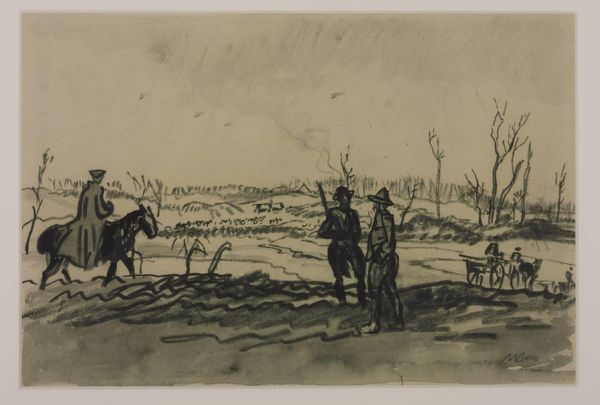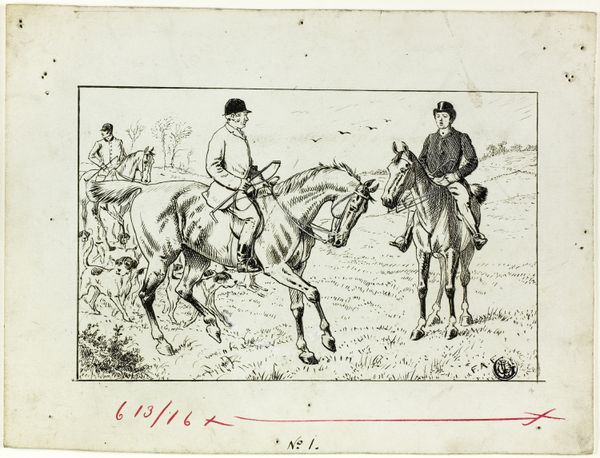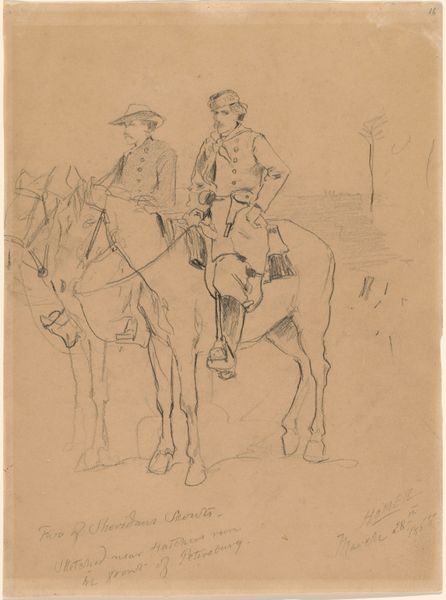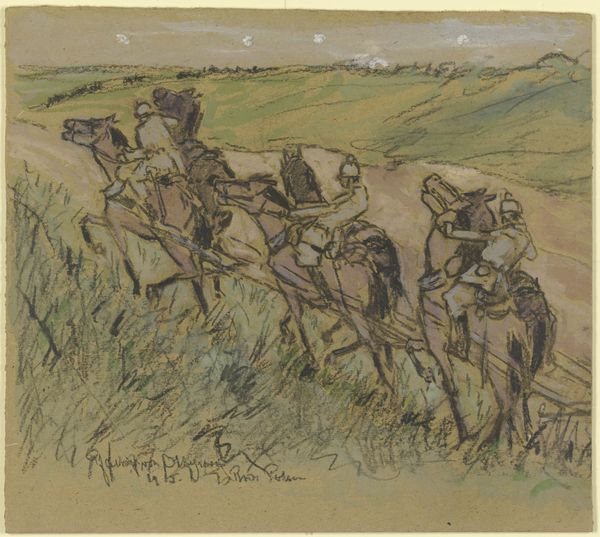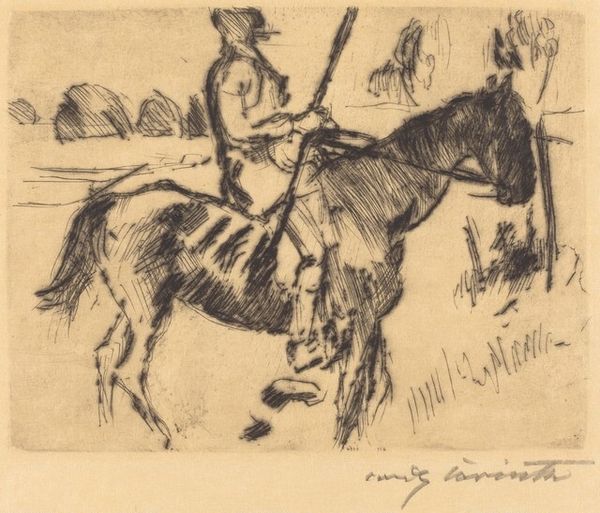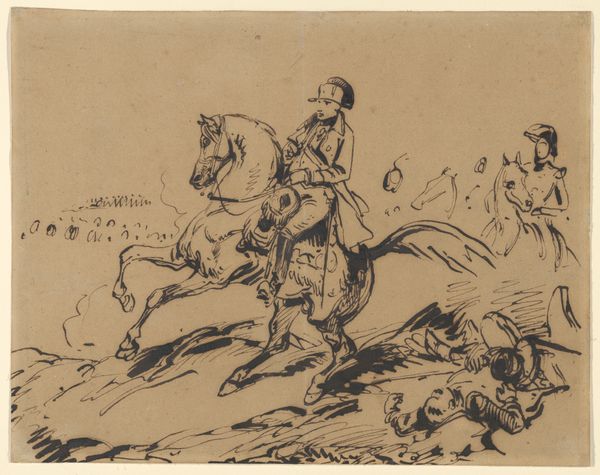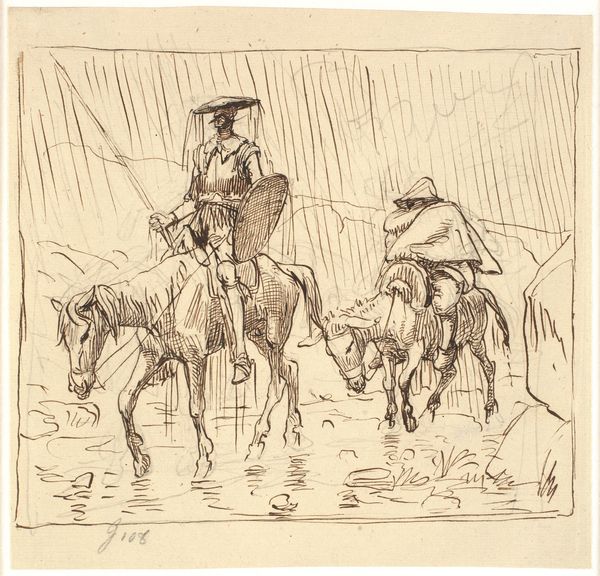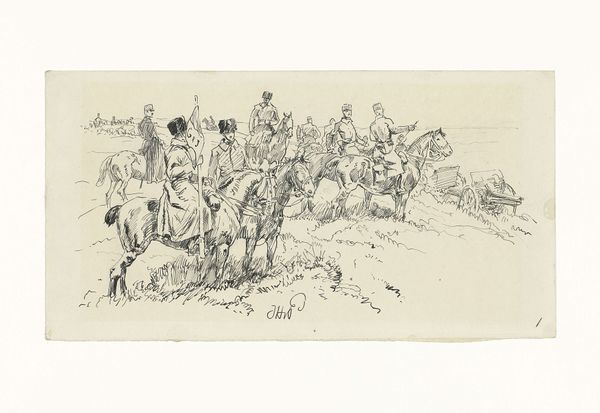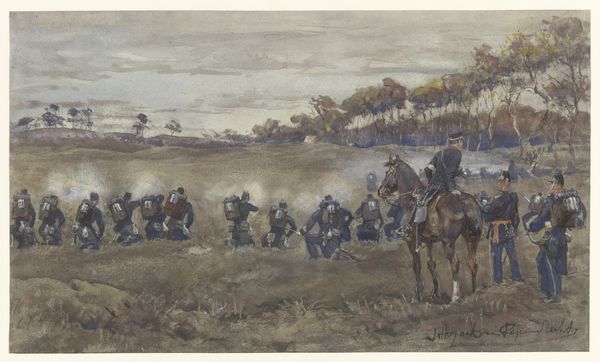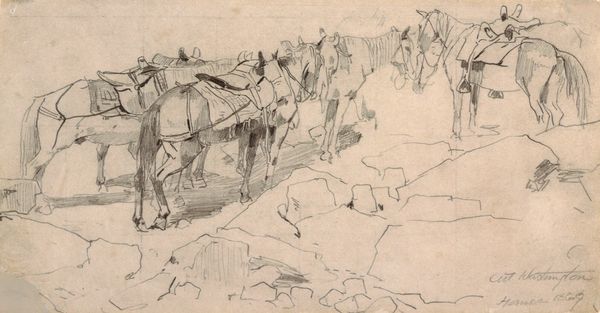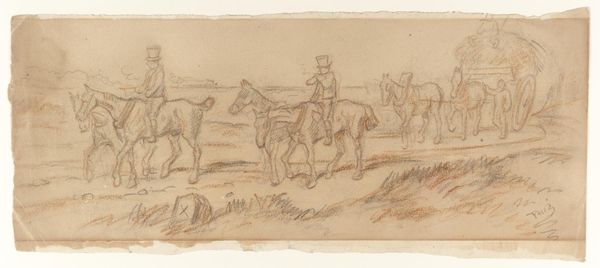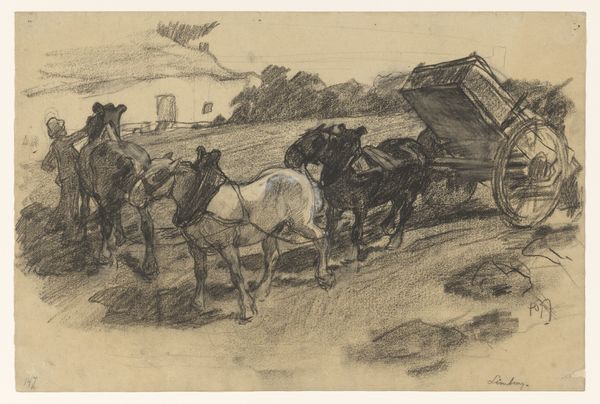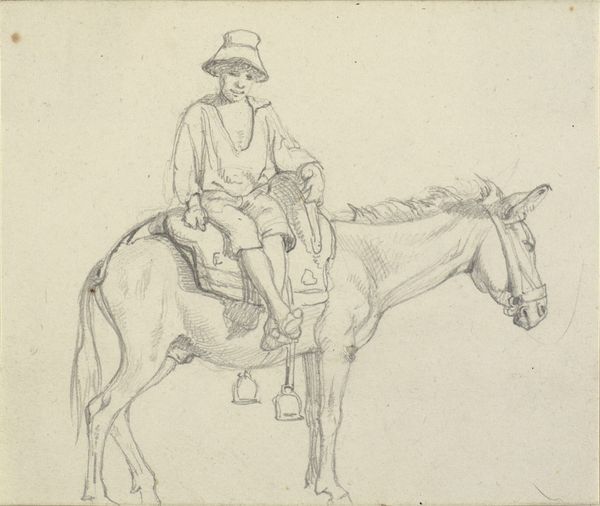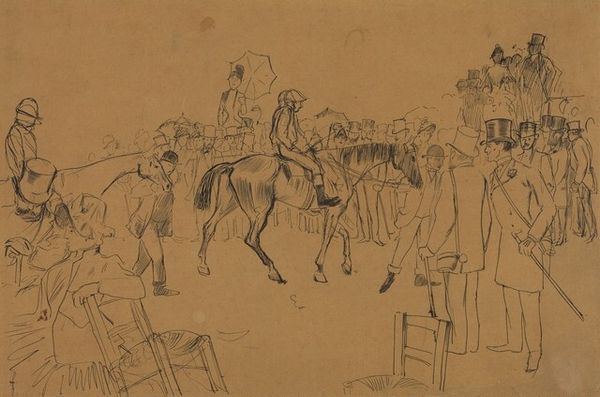
drawing, print, paper, ink, pen
#
drawing
#
ink drawing
# print
#
pen sketch
#
caricature
#
landscape
#
figuration
#
paper
#
ink
#
pen
#
genre-painting
Dimensions: 112 × 176 mm
Copyright: Public Domain
Curator: This drawing is titled "A Military Inspection," attributed to Charles Samuel Keene, and believed to have been created between 1870 and 1891. It's an ink drawing on paper. Editor: My immediate impression is that it feels quite satirical. The regimented line of soldiers in the background seems almost absurd against the backdrop of loose pen strokes. There’s a certain tension there. Curator: The historical context is crucial. Keene was a prominent social commentator in Victorian England, working primarily for the satirical magazine "Punch." So the socio-political issues of the time undoubtedly informed his artistic vision. Editor: Exactly! This begs the question of what aspects of the military or the social order Keene might be critiquing. The phrase scrawled on the lower portion seems to call attention to the men who perhaps break rank or don't properly fit in. Perhaps an allegory? Curator: Precisely. Caricature was a primary method, but here it’s interesting that he seems to mock an entire institution more than particular people, looking to me almost like he's challenging the concept of strict uniformity and control, which would resonate deeply given anxieties about social mobility and class structures in Victorian England. Editor: Also, the leader looks somewhat isolated, further underscoring the themes of hierarchy and authority. Is he really in charge, or simply maintaining appearances? Does his own horse know where it is going? Curator: And within that social critique, what are we to make of that caption on the image: "Hullo, there's a man blowing his nose, and with a pocket-handkerchief too! Tut, tut, tut." In this context of British imperial history, what is at stake in these kinds of highly constructed forms of military performance and gendered expectation? Editor: Interesting perspective. I hadn’t thought of the link between military display and performance, or the enforcement of a very narrow form of acceptable gender expression in the period. It adds another layer to the cartoon's appeal. Curator: So, in viewing "A Military Inspection," it is key to think about Keene's background, and to interrogate this idea that conformity, masculinity, and military action work as intertwined narratives that reveal cultural pressures of the era. Editor: Indeed, a seemingly simple sketch invites a deeper dive into Victorian social norms and critiques of power. Curator: Absolutely. It challenges us to examine not just what we see, but the social underpinnings that informed its creation and continue to inform its reception.
Comments
No comments
Be the first to comment and join the conversation on the ultimate creative platform.
